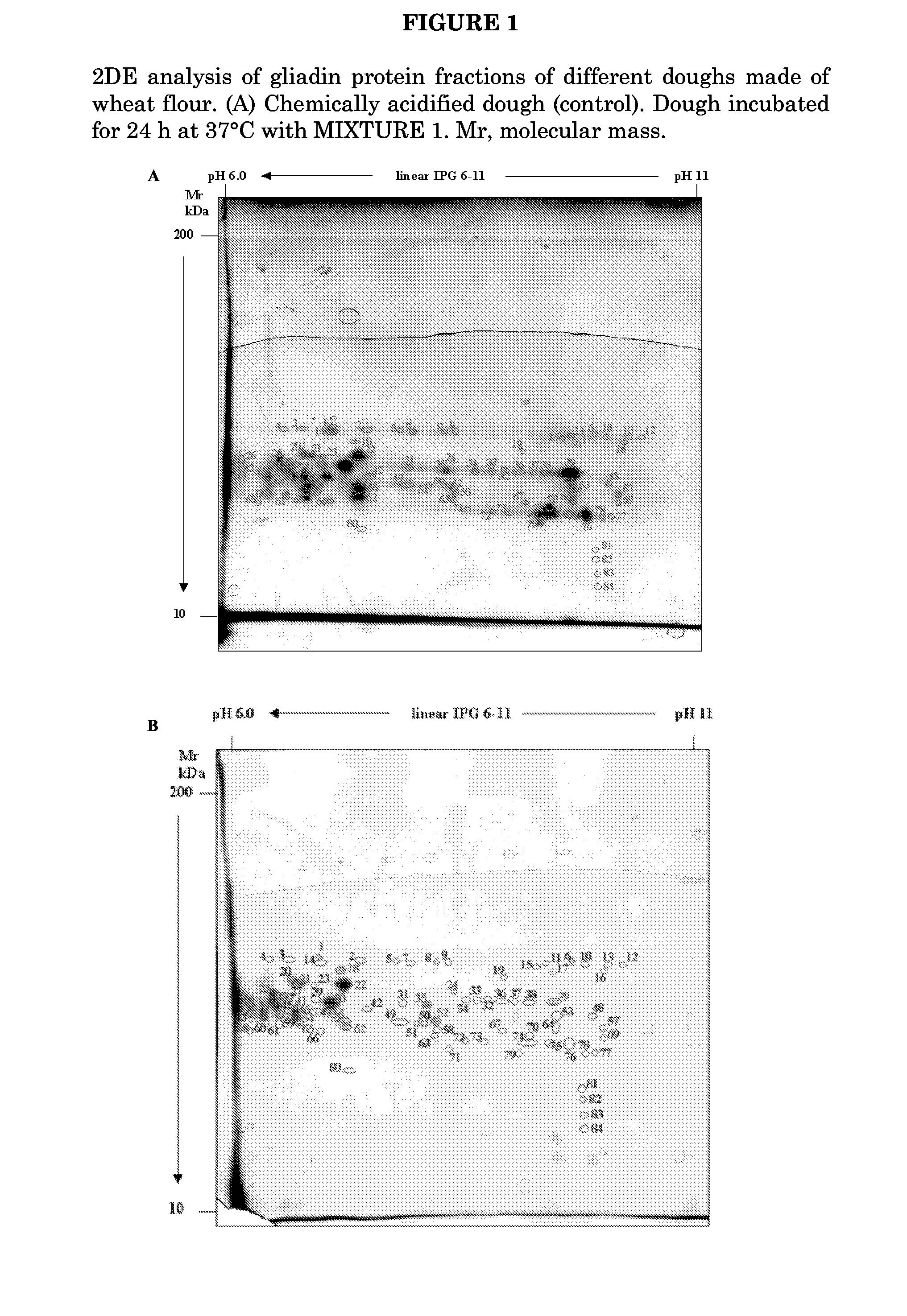Mixture of at Least 6 Species of Lactic Acid Bacteria and/or Bifidobacteria in the Manufacture of Sourdough
a technology of lactic acid bacteria and sourdough, which is applied in the field of at least 6 species of lactic acid bacteria and/or bifidobacteria in the manufacture of sourdough, can solve the problems of unresolved practical problems, non-reproducible strains, and strains that are not commercially availabl
- Summary
- Abstract
- Description
- Claims
- Application Information
AI Technical Summary
Benefits of technology
Problems solved by technology
Method used
Image
Examples
example 1
Sourdough Fermentation and Electrophoresis Analyses
[0119]The characteristics of the wheat flour used were as follows: moisture, 12.8%; protein (N×5.70), 10.7% of dry matter (d.m.); fat, 1.8% of d.m.; ash, 0.6% of d.m.; and total soluble carbohydrates, 1.5% of d.m. Eighty grams of wheat flour and 190 ml of tap water (containing a cell concentration of the cell preparations of about 109 cfu per g of dough) were used to produce 270 g of dough (dough yield, 220). Four doughs were manufactured by using the following mixtures of lactic acid bacteria and Bifidobacteria.
[0120]Mixture 1 according to the invention:
[0121]Streptococcus thermophilus,
[0122]Bifidobacterium infantis,
[0123]Bifidobacterium longum,
[0124]Bifidobacterium breve,
[0125]Lactobacillus acidophilus,
[0126]Lactobacillus plantarum
[0127]Lactobacillus casei,
[0128]Lactobacillus delbrueckii subsp. bulgaricus.
[0129]Mixture 2 according to the invention
[0130]Streptococcus thermophilus,
[0131]Bifidobacterium lactis,
[0132]Bifidob...
example 2
[0169]The sourdough prepared according to Example 1 was used in the manufacture of baked products.
[0170]Baked products as disclosed in Examples of U.S. Pat. No. 6,884,443 were prepared by using the dough composition according to the present invention instead of the one of the patent. Fermentation was carried out at 37° C. for 24 hours as disclosed in Example 1 above and MIXTURE 1 was used.
[0171]The products resulted more digestible and suitable for subjects affected by celiac disease.
example 3
[0172]The sourdough prepared according to Example 1 with MIXTURE 2 was used in the manufacture of pasta.
[0173]The pasta resulted more digestible and can be taken by subjects affected by celiac disease.
PUM
 Login to View More
Login to View More Abstract
Description
Claims
Application Information
 Login to View More
Login to View More - R&D
- Intellectual Property
- Life Sciences
- Materials
- Tech Scout
- Unparalleled Data Quality
- Higher Quality Content
- 60% Fewer Hallucinations
Browse by: Latest US Patents, China's latest patents, Technical Efficacy Thesaurus, Application Domain, Technology Topic, Popular Technical Reports.
© 2025 PatSnap. All rights reserved.Legal|Privacy policy|Modern Slavery Act Transparency Statement|Sitemap|About US| Contact US: help@patsnap.com


